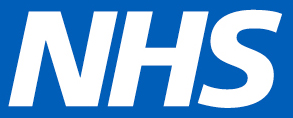Leukaemia claims more lives than breast and prostate cancer every year, and blood cancers have a higher rate of emergency diagnosis than other cancer types, but the awareness of its symptoms amongst the public and community pharmacy teams remains low.
83% of leukaemia patients had heard of the term leukaemia, but only a third of those reported that they knew anything about it before their diagnosis. The delay in patients recognising their symptoms as leukaemia and seeking care is recognised as a cause of the delay in diagnosis.
What can be done in primary care to improve a patient’s likelihood of seeking care and advice about their symptoms and entering a diagnostic pathway if appropriate?
Community pharmacies are very accessible, trusted sources of healthcare in the community (1.6 million visits take place daily, of which 1.2 million are primarily for health reasons).
89% of the population can reach their local community pharmacy within a 20-minute walk. This rises to 98% in urban areas like cities, and 99% in areas of high deprivation and health inequalities.
This trust in community pharmacy teams can be used to empower patients by raising awareness of the six most common symptoms of leukaemia through Leukaemia Care’s ‘Spot Leukaemia’ campaign. These are:
- Fatigue
- Feeling weak or breathless
- Fever
- Bruising or bleeding
- Repeated infections
- Joint or bone pain
Source: spotleukaemia.org.uk
But making people aware of symptoms is not necessarily the answer. Evaluations of NHS England’s ‘Be Clear on Cancer’ Campaign from 2012 showed the increase in public awareness of the key symptoms of bowel and lung cancer had no clear evidence of lowering barriers to visiting the GP.
This is where community pharmacy teams can act. By helping a patient recognise leukaemia, they can recommend they see their GP, provide reassurance through all stages of their healthcare journey and dispel any myths they may have heard surrounding leukaemia and its treatment.
There are opportunities for community pharmacies to build on the diagnosis of leukaemia by helping their patients navigate along the care pathway. Pharmacists can break down any barriers to a patient’s understanding through the diagnostic journey by helping them understand and provide reassurance about their clinic letters, for example, to prevent a lack of attendance at any stage.
There are also solutions to shorten the delay in diagnosis that could be explored including:
- Enabling direct referrals for full blood counts from community pharmacies.
- Completing the Community Pharmacist Consultation Service loop, so pharmacy teams are aware of their referral outcomes.
- Empowering community pharmacy teams to take a lead in recognising the symptoms of leukaemia and arranging blood tests to be taken at the patient’s local pharmacy.
- Encouraging their patients to seek care from their GP sooner.
How can we support this?
- We can write referral guidelines for community pharmacy teams to follow
- Run and review community pharmacy pilot sites
- Improve health education and engagement in community pharmacy
This will enable leukaemia diagnosis at an earlier stage as proposed in the NHS Long Term Plan. Using the skills of community pharmacy teams as valued healthcare professionals in the community can give GPs more information prior to diagnosis, and most importantly, reduce a patient’s delay in diagnosis.
To find out more,









